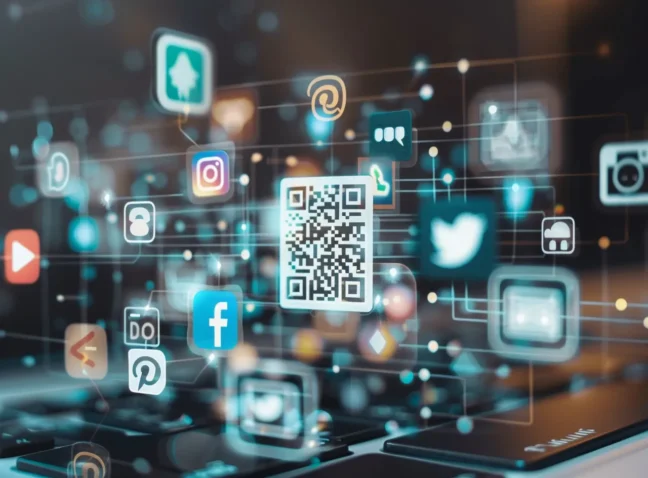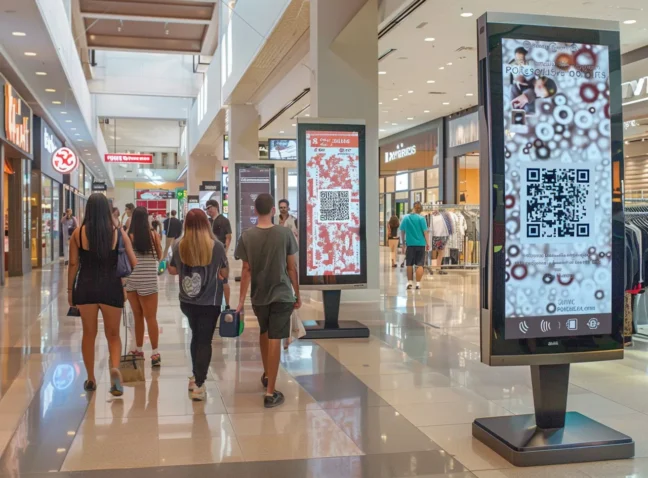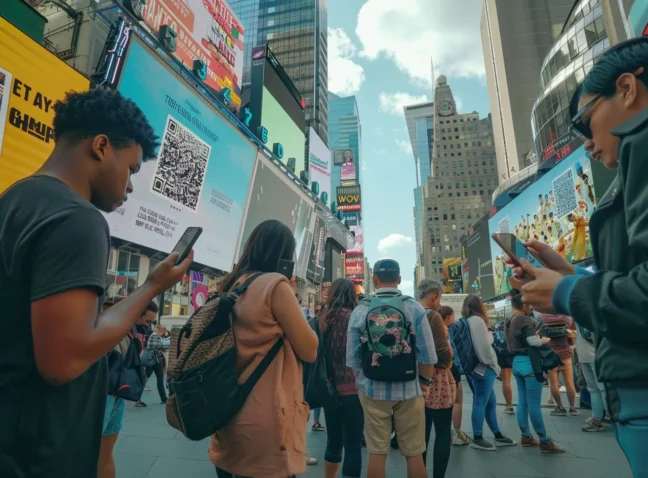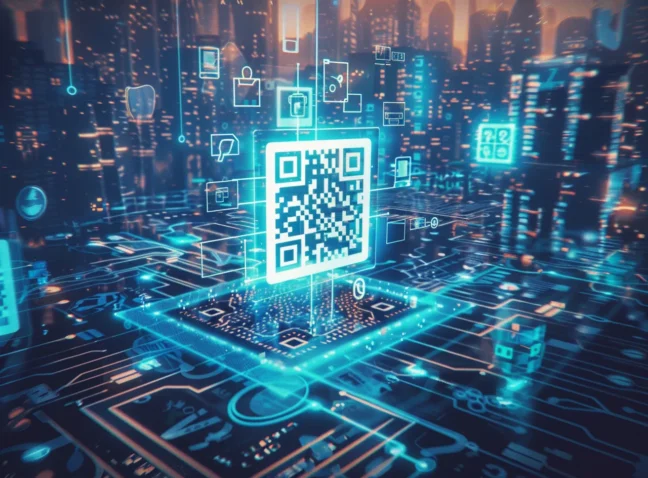QR codes for voting systems is a new phenomenon. Voting systems are the backbone of every democracy, and they’ve seen a lot of refinement over the years. While in their humble beginnings, balloting was rife with corruption and voting scandals, they’ve become much more secure in the modern era. Especially with the introduction of digital balloting.
That’s where QR codes for voting systems come in. Paired with digital voting systems, QR codes can be used to provide quick access for voters on balloting web pages. Join us here at MyQRCode, as we look at how this technology is setting the stage for a new era of voting, inviting a closer look at its potential to redefine electoral engagement.
Why QR Codes are Essential for Modern Electoral Systems
Integrating QR codes into electoral systems represents a monumental leap forward in modernizing and securing the voting process. Originally crafted for marketing endeavors, QR technology now stands as a cornerstone in electoral systems worldwide, notably in nations like Norway, Belgium, Estonia, Germany, and the USA. This adaptation is rooted in QR codes’ remarkable capacity to simplify voting procedures, amplify voter engagement, and fortify defenses against manipulation or fraud.
There’s a good reason why these countries are beginning to implement QR codes more and more into their elections. Not only can they help transport voters to digital election pages, but they also enforce the strict integrity of elections. This is crucial nowadays, especially when many voters are becoming more skeptical of traditional paper ballots. With QR codes for electoral systems, you can dispel these worries, and ensure that voters feel secure in the integrity of democracy.

QR Codes: Transforming Electoral Systems for Modernization and Security
Considering that QR codes have become more ubiquitous in recent years, with around 27 million scans being completed in the first three months of 2024 alone, voting system QR codes could be rolled out sooner rather than later. Internet voting is also becoming more popular, too, as in the latest US presidential elections in 2020, around 300,000 Americans cast their votes online. (NPR)
How Voting System QR Codes can be Used
QR codes for voting systems can come with a lot of benefits. However, they haven’t been implemented very widely as of yet. Even though there are many countries which have welcomed digital voting systems with open arms, Canada, Brazil, and Estonia to name a few (ACE Electoral Knowledge Network), many are still skeptical. But, we’re here to show you how QR codes can be used to improve voting system processes:
- Voter Registration: QR codes can be used on vote information flyers, and advertisement banners to take users to voter registration platforms. It’s something that’s already been implemented in some states, like California for instance. California allows candidates in local elections to post QR codes on their candidate websites, taking users to online registration pages. (Government of California).
- Greater Voter Accessibility: This has been a recurring issue in elections. For disabled users, accessing polling stations can be a major hurdle. So much so that around 52% of disabled voters cast their vote by mail in the 2020 elections (US Election Assistance Commission). There’s also the issue of accessibility to polling stations in more rural areas, which can affect voter turnout. With QR codes for voting systems, these issues can be solved efficiently, as users can cast their votes online without having to leave their homes.
- Easier Voting Counts: Voting system QR codes can enable users to cast their votes online. Online votes are much easier to count, and completely removes the need for the mass of vote counters needed in elections. Human vote counting is notoriously expensive, and prone to mistakes (NPR), but with the implementation of QR code voting systems, there will be less people needed for the counting process, reducing the overall cost of elections.
- Better Voter Engagement: While voter turnout in the 2020 elections was exceptionally high at 66% (Pew Research Center), this isn’t always the case. For instance, local election turnouts can be as low as 6% in some areas (National Civic League). This is again due to ease of access, and the fact that many people lead busy lives, and so might not find the time to vote in lesser elections. With voter system QR codes, voter turnout could be increased, as users can vote without having to travel to designated polling stations.
- More Eco-Friendly: Paper ballots are still among the most popular ways to cast votes, making up around 65% of all votes cast in 2022 (Governing). Introducing QR codes for voting systems could cut that number drastically, which will reduce the amount of paper ballots produced.
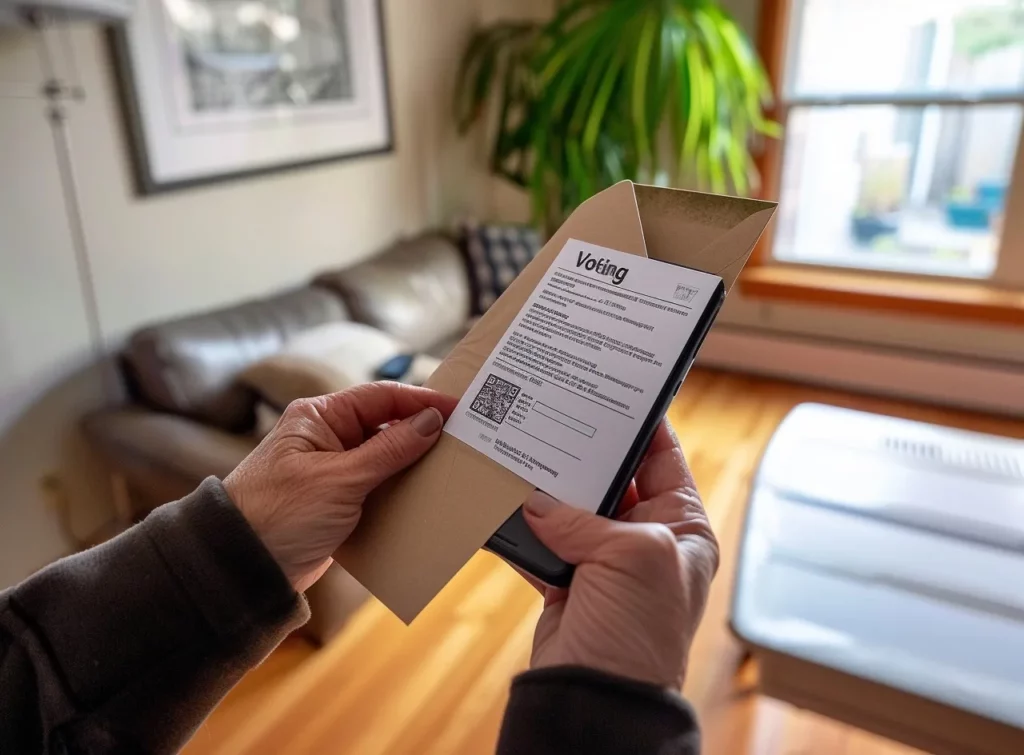
The Risks of QR Codes for Voting Systems
Aside from the normal issues of user adoption with QR codes, there are a couple of risks which are unique to QR codes for voting systems. The biggest risk is security. QR codes can be used to take users to fake voting pages, and can completely derail public confidence in elections. That’s not to mention the increased risk of nefarious actors using QR codes for phishing scams.
To circumnavigate these struggles, government agencies need to be clear about the associated risks, and educate users about the safe use of QR codes. Additionally, only including QR codes in balloting offices, or on government websites will help to maintain their security.
The Risks of QR Codes for Electoral Systems: Addressing Privacy, Security, and Access Concerns
QR codes for electoral systems can be risky. As a matter of fact, internet voting integrity is still regarded as being ‘impossible’ by some research institutions (UC Berkeley Working Group). However, that’s not to say that voting system QR codes don’t have a future. They just need to be made more secure for voting practices.
For instance, one way to do this is to ensure that all QR codes for voting systems have sophisticated security features, like high-level encryption and tamper proof security seals. With these features in place, digital election processes will be much safer, and increase the levels of voter confidence in these systems.
QR code generator for electoral systems
While QR codes for voting systems definitely has some drawbacks, the benefits for increased accessibility far outweigh any downsides associated with their use. They can increase levels of voter registration, and voter turnout, which helps keep the spirit of our democracies alive.
Ready to bring the future of voting systems into your hands? Take a look at the MyQRCode QR code generator, which allows you to design a QR code in a matter of seconds. You can also add a logo onto your QR code, which will almost act as a seal of quality assurance in elections. So, start creating today, and add a completely new layer of functionality and accessibility to your voting systems!
